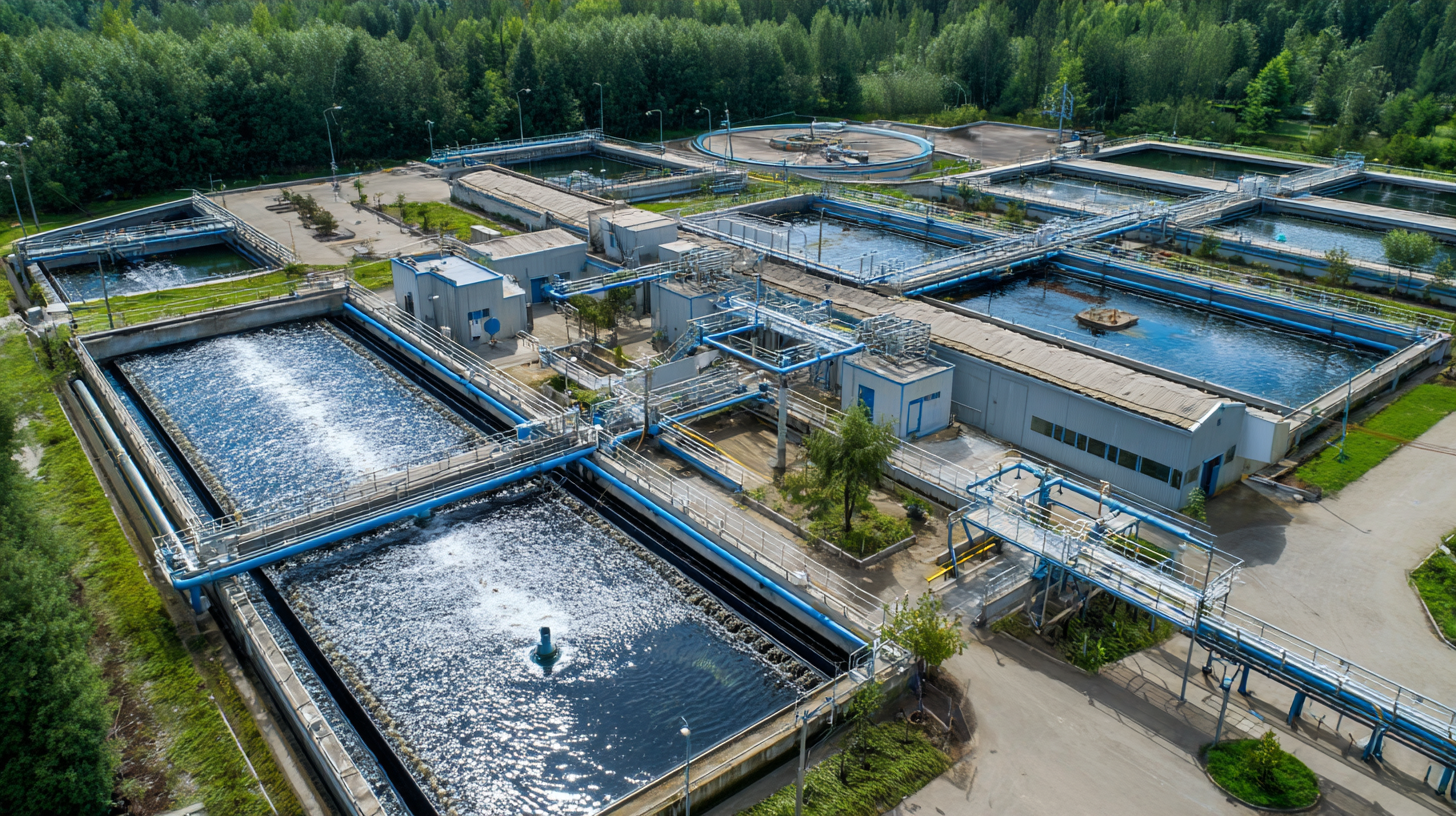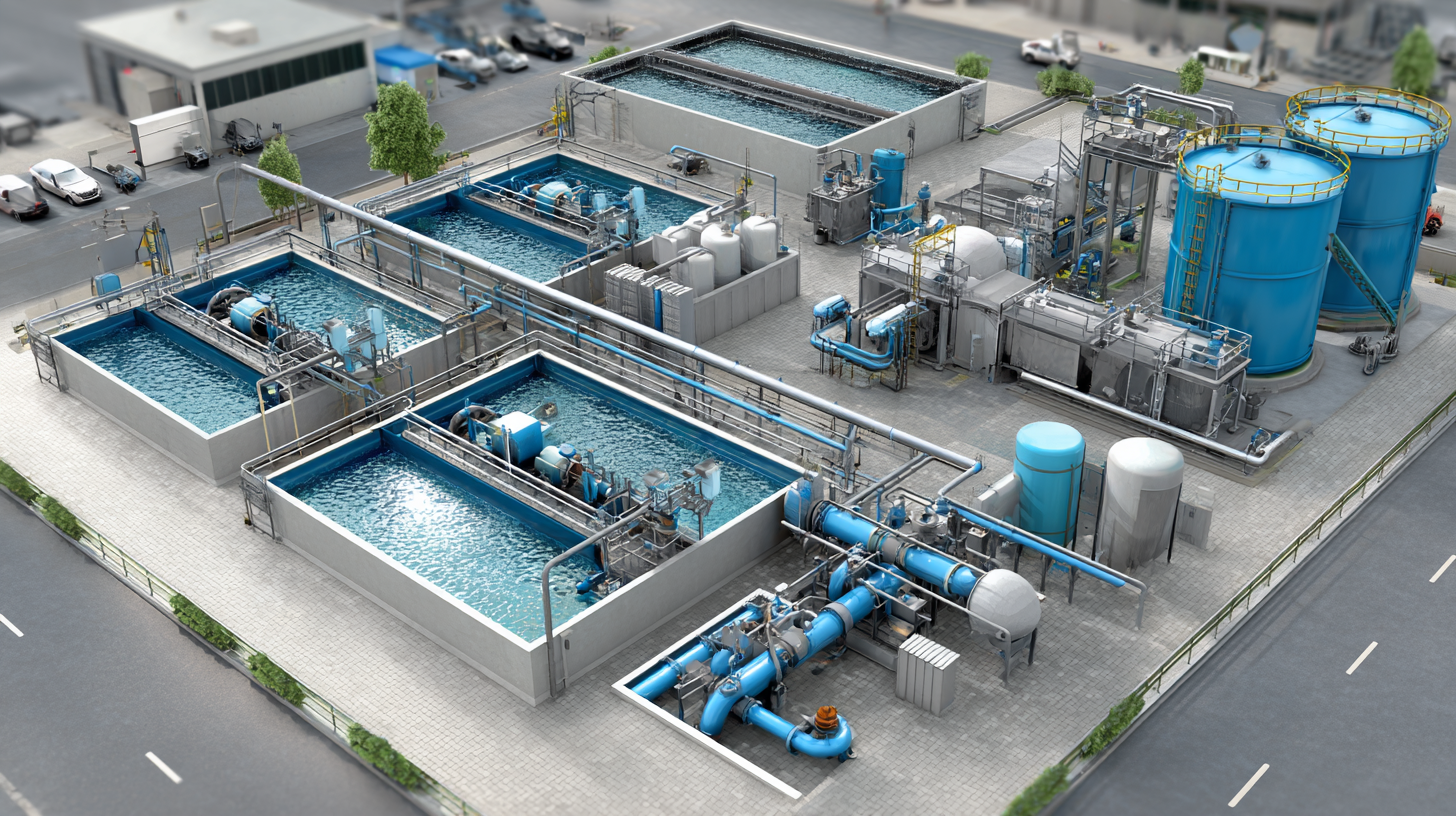Understanding the Essential Steps in the Wastewater Treatment Plant Process
The wastewater treatment plant process is critical for managing the increasing volume of wastewater generated by urban populations, which is projected to reach over 70% of the global population living in urban areas by 2050. According to the World Bank, the global cost of water-related issues can reach up to $500 billion annually across various sectors, highlighting the financial stakes of effective wastewater management. The treatment of wastewater not only safeguards public health but also serves as a vital resource for environmental sustainability. As innovation drives improvements in efficiency, the industry is witnessing the integration of advanced technologies such as membrane bioreactors and artificial intelligence in monitoring systems. Understanding the essential steps in the wastewater treatment plant process is paramount for professionals aiming to optimize operations, mitigate environmental impact, and comply with stringent regulations, making it an increasingly important topic in both engineering and environmental sciences.

Key Phases of Wastewater Treatment: An Overview of the Process
Wastewater treatment is a critical process that ensures the safe return of water to the environment. The primary phases of this process include preliminary treatment, primary treatment, secondary treatment, and tertiary treatment. According to the U.S. Environmental Protection Agency (EPA), approximately 34 billion gallons of wastewater are treated daily in the United States alone. This staggering volume highlights the importance of understanding each key phase of treatment.
In the initial stage, preliminary treatment involves the removal of large solids and debris, typically using screens and grit chambers. Following this is primary treatment, where sedimentation tanks allow heavier solids to settle at the bottom, forming sludge. The EPA estimates that primary treatment can reduce suspended solids by up to 50%. The secondary treatment phase often employs biological processes to further degrade organic matter, with methods such as activated sludge systems. Studies indicate that secondary treatment can remove around 90% of organic pollutants.
Finally, tertiary treatment aims to further enhance water quality by targeting remaining contaminants, which may include nutrients like nitrogen and phosphorus. This phase can involve advanced filtration, chemical treatment, and disinfection methods like UV light or chlorination. Data from the World Health Organization (WHO) shows that effective tertiary treatment can achieve a wastewater quality safe enough for agricultural reuse. Understanding these phases is crucial for professionals in the water management sector as they work to protect public health and the environment.
Understanding the Key Phases of Wastewater Treatment
This chart illustrates the essential steps involved in the wastewater treatment process, focusing on the volume of wastewater treated at each phase. The data represents typical percentages of water volume at each stage of treatment.
Preliminary Treatment: Removing Large Solids and Debris
Preliminary treatment is a crucial first step in the wastewater treatment plant process, focusing on the removal of large solids and debris that can interfere with subsequent treatment stages. This phase typically involves screening, where wastewater flows through various screens with different sized openings to catch items such as plastics, leaves, and other large debris. Effective screening not only protects the equipment downstream but also enhances the overall efficiency of the treatment process.
After screening, additional processes like grit removal may take place to eliminate inorganic materials such as sand and gravel. This step is essential as it prevents damage to pumps and pipes, ensuring that the wastewater can flow smoothly throughout the treatment facility. Grit chambers are often utilized, allowing heavier particles to settle while lighter materials remain in suspension. By efficiently managing these initial challenges, plants can set the foundation for more advanced treatment processes and improve the overall quality of treated water before it is released back into the environment.

Primary Treatment: Settling and Separating Organic Matter
In the primary treatment stage of wastewater treatment plants, the focus is on the effective settling and separation of organic matter from the water. This crucial phase begins with the inflow of raw wastewater into large settling tanks, where gravity plays a key role.
As the wastewater sits, heavier solids, such as organic debris and silt, settle to the bottom, forming a sludge layer. The design of these tanks is optimized to maximize the retention time, allowing for efficient sedimentation.
Once the solid waste has settled, the clear liquid on top, often referred to as "supernatant," is siphoned off for further treatment. This separation is vital not only for reducing the volume of contaminants but also for preparing the wastewater for the next treatment stages. Effective primary treatment significantly reduces the organic load on subsequent treatment processes, enhancing their efficiency and reducing the costs associated with further purification.
By concentrating on settling and separating organic matter, wastewater treatment plants lay a solid foundation for cleaner, safer water to be returned to the environment.
Secondary Treatment: Biological Processes for Nutrient Removal
Secondary treatment is a critical phase in the wastewater treatment plant process, focused on the biological removal of nutrients, specifically nitrogen and phosphorus. During this stage, microorganisms such as bacteria and protozoa play a vital role in breaking down organic matter and facilitating nutrient transformation. The treatment typically operates through aerobic and anaerobic processes, where aeration tanks or lagoons are utilized to provide the necessary oxygen for aerobic bacteria to thrive. This not only aids in decomposing organic pollutants but also allows for the absorption of nutrients by these microorganisms.
In addition, advanced biological methods, such as activated sludge systems and membrane bioreactors, have gained popularity for their efficiency in nutrient removal. These systems promote the growth of specific bacterial populations that can effectively consume excess nitrogen and phosphorus, minimizing the potential for eutrophication in receiving water bodies. By optimizing conditions within the treatment environment, operators can enhance microbial activity and achieve better nutrient reduction outcomes, ultimately creating cleaner effluent that is more environmentally friendly and compliant with regulatory standards.

Tertiary Treatment: Advanced Techniques for Final Purification
Tertiary treatment represents the final stage of wastewater treatment, focusing on advanced techniques to ensure the water is purified before it is discharged or reused. This phase often employs sophisticated processes such as microfiltration, ultrafiltration, reverse osmosis, and advanced oxidation. By targeting remaining contaminants and pathogens, tertiary treatment plays a crucial role in enhancing water quality, making it suitable for various applications, including irrigation and even potable reuse in regions facing water scarcity.
Tips: When selecting a tertiary treatment method for your facility, consider factors such as the type of contaminants present in the effluent and the intended use of the treated water. Regular maintenance and monitoring of the equipment involved in these advanced treatments are essential to ensure operational efficiency and compliance with environmental regulations.
Another vital aspect of tertiary treatment is the implementation of chemical processes such as chlorination or ozonation. These methods are effective in eliminating microorganisms that may still be present after primary and secondary treatments. The choice of chemical treatment should align with the specific water quality requirements needed for its final use, providing not only safety but also sustainability in water resource management.
Tips: Always conduct a thorough analysis of your influent characteristics to determine the most effective combination of tertiary treatment techniques. Educating your team about the latest advancements in water treatment technology can also foster innovation and improve system performance.
Related Posts
-

Exploring Innovations in Package Wastewater Treatment Plants at the 138th Canton Fair 2025
-

How to Optimize Sewage Water Treatment for Environmental Sustainability
-

Revolutionizing Urban Sustainability with Advanced Waste Water Treatment Equipment Solutions
-

How Wastewater Treatment Systems Are Revolutionizing Environmental Sustainability
-

The Ultimate Guide to Choosing the Right Centrifugal Pump for Your Needs
-

10 Innovative Methods for Effective Waste Water Removal You Need to Know


